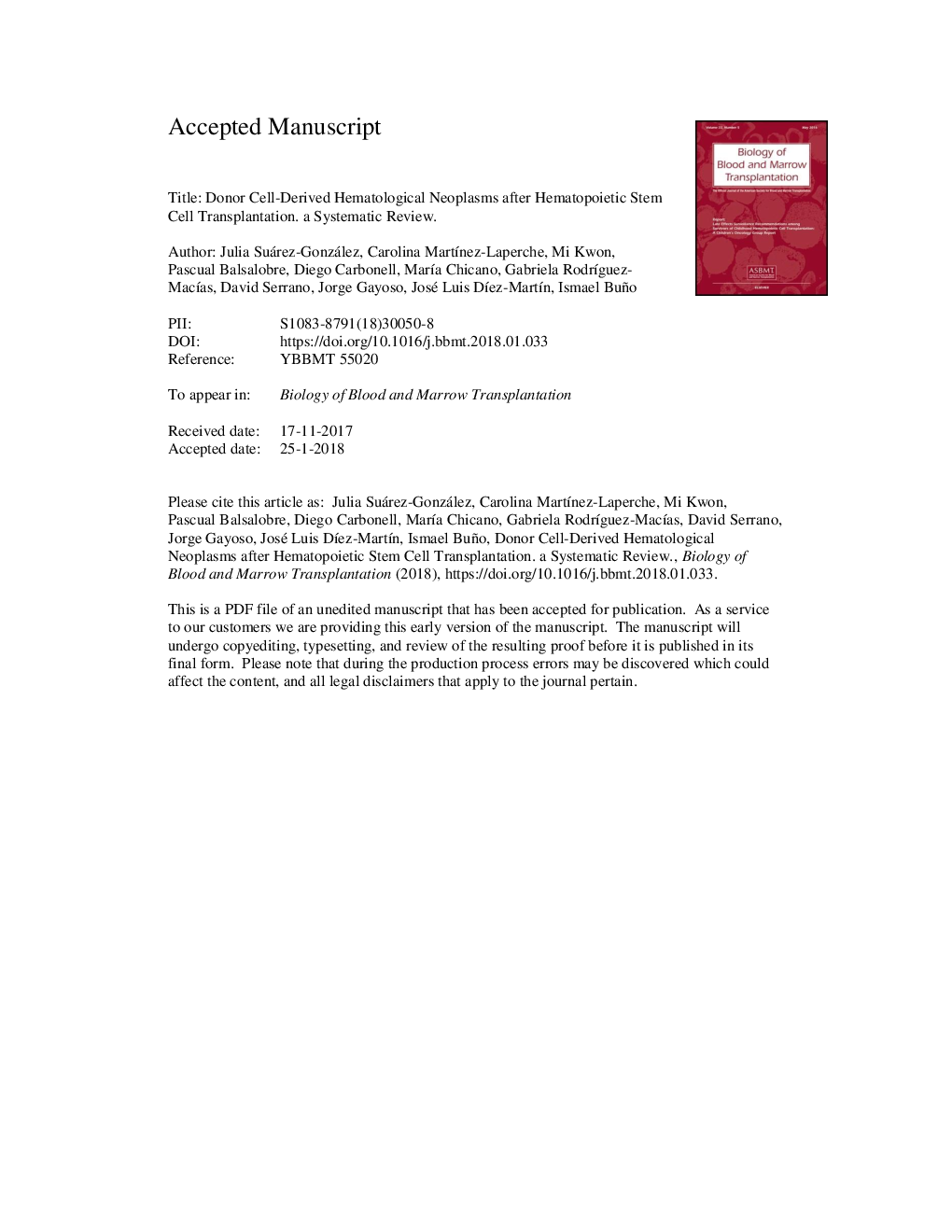| Article ID | Journal | Published Year | Pages | File Type |
|---|---|---|---|---|
| 8429769 | Biology of Blood and Marrow Transplantation | 2018 | 47 Pages |
Abstract
Development of de novo hematologic malignancies in donor cells after allogeneic stem cell transplantation (allo-SCT) provides a useful in vivo model to study the process of leukemogenesis. A systematic analysis of the cases reported in the literature was performed to identify risk factors and mechanisms involved in the pathogenesis of donor cell-derived hematologic neoplasms (DCHN) and leukemogenic transformation. Relevant data were extracted from 137 cases. Cases of DCHN show a wide heterogeneity with regard to recipient/donor age, sex mismatch, and conditioning regimen. Some characteristics, such as the type of primary disease, the type of hematologic malignancy of the DCHN, and the stem cell source used in the transplant procedure, differ from those expected. Mechanisms involved in the pathogenesis of DCHN are complex, and several hypotheses have been proposed, such as pre-existing hematologic neoplasms or premalignant clones in the donor, decreased immune surveillance, and damage to bone marrow microenvironment in the recipient. Most likely several if not all these mechanisms play a role in DCHN development. Novel approaches, such as next-generation sequencing to study consecutive samples after allo-SCT in these patients, appear to be promising to decipher the mechanisms of leukemogenesis.
Related Topics
Life Sciences
Biochemistry, Genetics and Molecular Biology
Cancer Research
Authors
Julia Suárez-González, Carolina MartÃnez-Laperche, Mi Kwon, Pascual Balsalobre, Diego Carbonell, MarÃa Chicano, Gabriela RodrÃguez-MacÃas, David Serrano, Jorge Gayoso, José Luis DÃez-MartÃn, Ismael Buño,
